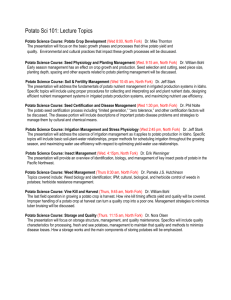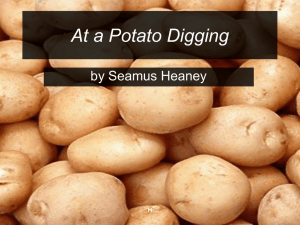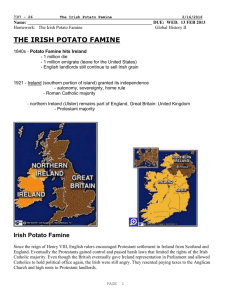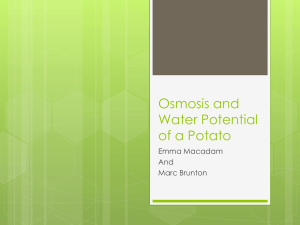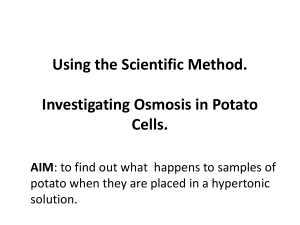The Irish Potato Famine
advertisement
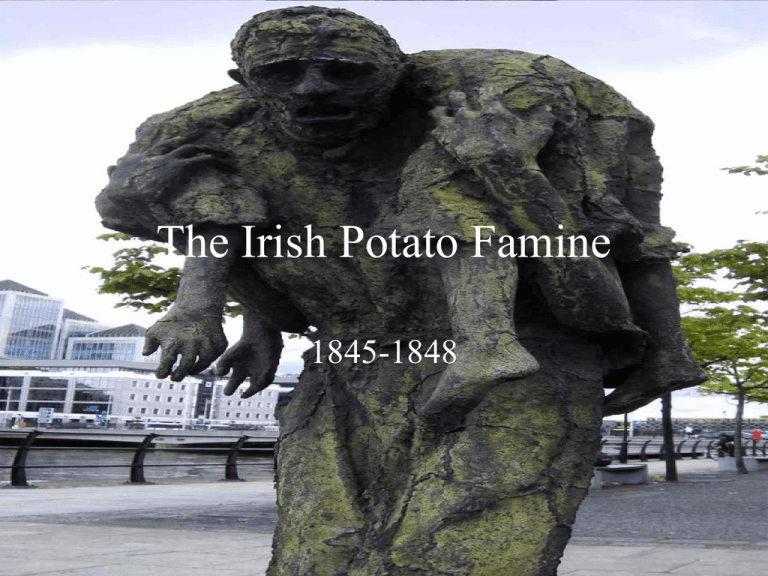
The Irish Potato Famine 1845-1848 Background on Ireland in the mid-1800s • • • • Ireland was a farming nation. 8 Million people Poorest nation in the world Only ¼ of the population could read and write. • Life expectancy was 40 years old. • Many married by ages 16, 17, and 18. Background on Ireland in the mid-1800s (cont.) • Most of the farms were owned by the English ruling class. • Poorer farmers worked in exchange for a place to live. – They lived on the farm. – A poor family would live in a single room hut. • The Irish poor depended on these farms, and the potato, for their existence. The Potato • Peru introduced the potato to Ireland in 1590. • A potato harvest could feed an Irish family of 6 for an entire year. • By the 1800s, almost half the Irish population lived on potatoes alone. – 3 million people The Potato (cont.) • The Irish grew a potato called a “Lumper.” • They were planted in March and harvested in Sept. and Oct. • This system went on for years in Ireland. • In September 1845, the potato plants and leaves began to turn black and rot. The Famine Begins: 1845 • Many thought the rotting potatoes came from the fog. • In actuality, the famine was a fungus brought on boats carrying goods. • The winds would carry the fungus to Dublin’s countryside. • A single infected potato could spread to 1000 more in a couple days. • The rancid potatoes gave off a nasty stench, as they turned to mush. Attempted Solutions • A Relief Commission was created to help those who didn’t have any food. – The donations, though, stopped after a short amount of time. • Prime Minister Peel was to oversee operations. – He took too long to make changes, and not much got done. • Peel tried to distribute corn imported from the U.S. – Many got diarrhea because they were not used to it. – No Vitamin C in the corn (scurvy). – The first supply of corn was never replaced. The Famine: Year Two (1846) • The potatoes did not grow again in 1846. • It got so bad, many began living off of other food items: – Blackberries, turnips, cabbage leaves – Seaweed, shellfish – Roots, weeds, and grass! • Many began to die, but not from starvation. – Typhus, dysentery, fever, and famine dropsy. • Not as many had died the first year b/c they borrowed money, sold off livestock, and had the imported corn. The Famine Continues • By 1847, soup kitchens were established, but they could not provide enough food. • People began trying to leave Ireland for countries like America. – One out of five died on the travels over. • It was not until 1852 that the Irish Potato Famine came to a complete end. – Many began to include corn and other vegetables in their diet and rely less on the potato. Famine Facts • 775,000 to 1.5 million died – ¼ of the population • Even today, Ireland is still affected by the Potato Famine. – Smaller population than 1840. • Many Irish ended up in other countries (like U.S.) • It was the single greatest disaster of the 19th Century. Lessons Learned: Diversity • As mentioned, the Irish learned to vary their diet. • The “Lumper” potato was the only potato affected by the fungus, but all potatoes were “Lumpers” in Ireland. • Genetic diversity in planting is key. • If they had planted many kinds of potatoes, the famine could have been avoided.
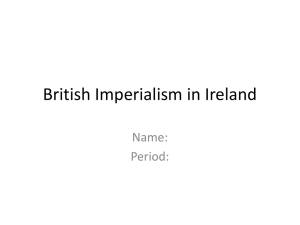
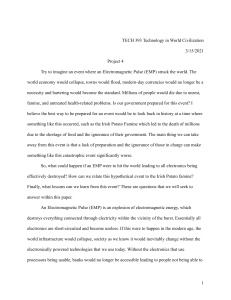
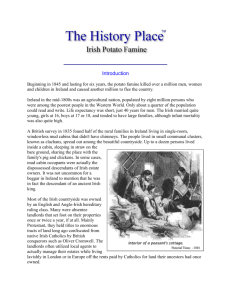

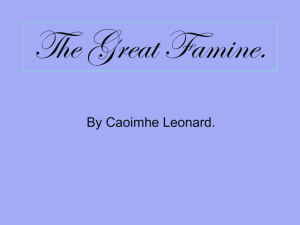
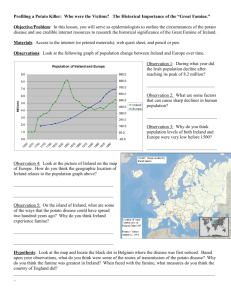
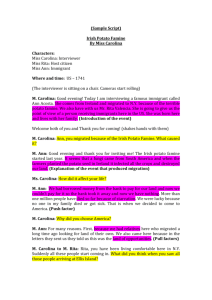
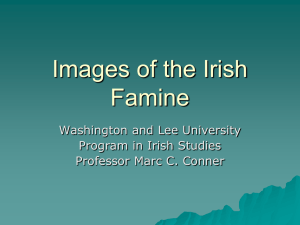

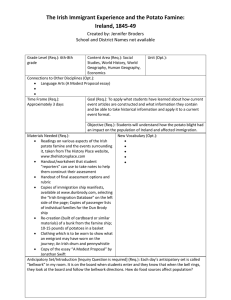
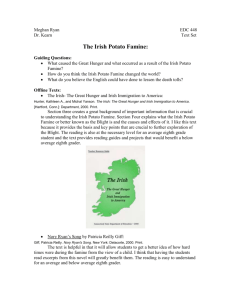
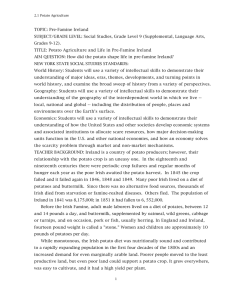
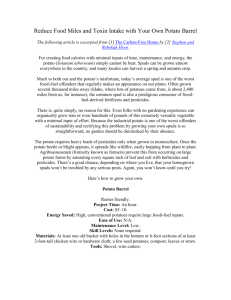
![The Real Irish-American [Famine] Story Not Taught in Schools](http://s3.studylib.net/store/data/006750449_1-fcf17f3f993595f2d4ade22048a1bd87-300x300.png)


